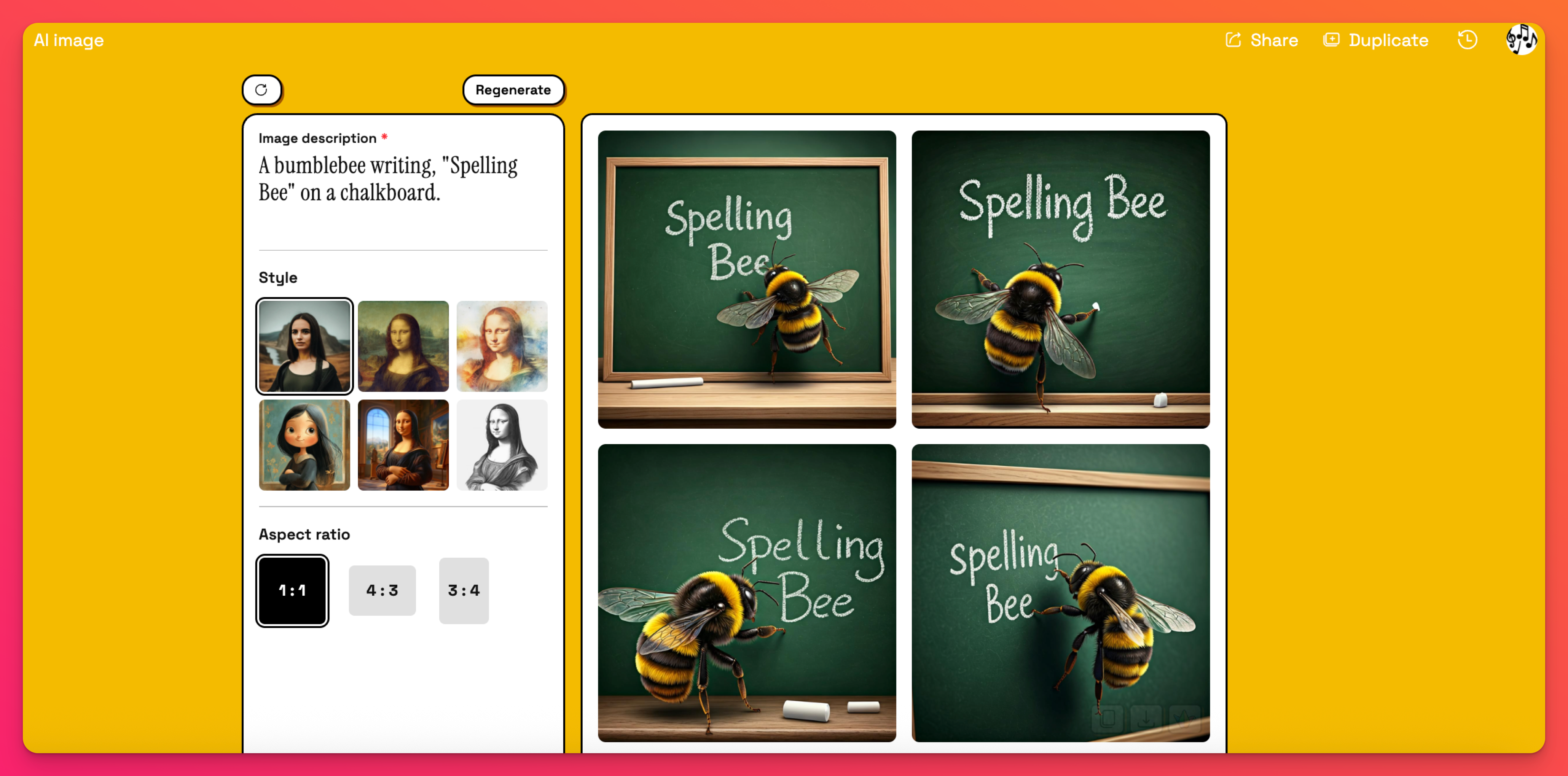Padlet TA - Quick Tools
Unlike the tools on Padlet TA where more extensive prompting is needed, Utilities are meant for quick, repetitive use. Navigate to ta.padlet.com or see below for the tools available and how to use them!

How does it work?
Visit ta.padlet.com and you will find the Utilities located at the bottom of the page. Click on the tool, fill out the required fields and click the arrow to generate your results!
* AI image: https://ta.padlet.com/image-generator
* Short link: https://ta.padlet.com/short-link
* Name picker: https://ta.padlet.com/name-picker
* Smart groups: https://ta.padlet.com/smart-groups
* QR code: https://ta.padlet.com/qr-code
Utilities
AI image generator
The AI image generator is a powerful tool that lets you create images with a text prompt. Generate visually engaging images to enhance lessons, presentations, worksheets and other classroom resources without needing design skills or expensive software.

- Enter a descriptive text prompt for the image you want to create. For example: "A bumblebee writing 'Spelling Bee' on a chalkboard."
- Select from six different style options: Photo Realistic, Oil Painting, Children's Book, Watercolor, Sketch, or 3D Animation
- Choose the aspect ratio for your photo and then click the arrow to generate several images.
Hover your mouse over each image to see your export options!
Name picker
The name picker helps teachers randomly select students for participation in a fair and engaging way. This simple but powerful tool eliminates bias in calling on students while adding an element of surprise that keeps learners attentive and ready to contribute.

- Enter a list of student names and choose your 'Repeat picks preference.' This will allow you to Pick each name once before starting over or Allow repeated picks.
- Click the arrow to start the name picker
- Click Pick a name to randomly select a student
QR code generator
The QR code generator is a simple yet powerful tool that allows educators to quickly create QR codes for any text or URL. Teachers can easily share digital resources with students, create interactive classroom materials and bridge the gap between physical and digital learning environments.

- Enter the text or URL you want to encode in the QR code
- Select a color and style option while viewing the generated QR code in real time
- Click Copy QR Code to copy the image to your clipboard or Download QR Code to save it to your device
Short link generator
The short link generator transforms long, complex URLs into concise, easy-to-share links. This tool helps educators create memorable links that students can quickly type or access, making digital resource sharing more efficient and accessible in classroom settings.
- Enter the URL you want to shorten
- Click the arrow and the tool will automatically generate a short link and a QR code
- Share this with others by clicking Copy link or Copy QR code to copy them to your clipboard or click Download QR code to save the QR code to your device.

Here's an example:
Enter https://en.wikipedia.org/wiki/Erd%C5%91s%E2%80%93Bacon_number in the 'URL' field and J3cJUS in the 'Custom link name' field. Then, click the arrow.
Results: This link: teach.link/J3cJUS (with an accompanying QR code that will redirect to the original URL).
Smart groups
The smart groups tool helps you intelligently organize students into balanced groups based on their characteristics and your specific requirements. This tool helps teachers create optimal student groupings for collaborative activities, projects and classroom management without the time-consuming manual effort typically required for thoughtful group composition.

- In the 'List of names,' enter the names of your students (including individual characteristics, if necessary)
- Enter the number of groups you want to create and/or the desired group size
- Click the arrow to generate balanced student groups
To change your results, try adjusting the prompts (on the left) with more detailed information. Then, click Regenerate!
Choose an Export option from the drop-down when you're ready.
Best practices for prompting
See our Best practices for prompting guide for tips on crafting effective prompts to get the best results.

